×


We have detected your country as:
Please click here to go to the USA website or select another country from the dropdown list.

{image_1}Tel Hazor is an archaeological site located in the Upper Galilee north of the Kinneret (Sea of Galilee). The latest find is part of a sphinx which has been dated to about 2500 BC. The statue is the only one anywhere in the world—including Egypt—bearing the pharaoh's name. A clear hieroglyphic inscription ties the sphinx to the Egyptian king Mycerinus, one of the builders of the Giza pyramids.
Continue Reading »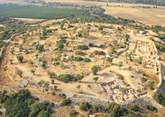
{image_1}Two royal public buildings, which were discovered about seven years ago at Khirbet Qeiyafa, about ten kilometers [6.2 mi] south of Beit Shemesh in the Elah Valley, have now been dated from the 10th century BC by archaeologists from the Hebrew University and the Israel Antiquities Authority (IAA). They are of a type not previously found in the area and are located in the biblical Kingdom of Judah. The fortified city is dated to the time of King David and has been identified by the archaeologists as the biblical city of Sha'arayim. The city is mentioned several times in the Bible, when it is recorded that “the Philistines ran away to Sha'arayim after Goliath was slain by David.”
Continue Reading »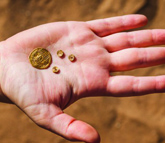
{image_1}Researchers from the Israel Antiquities Authority and the Tel Aviv University are examining why 400 Byzantine coins, 200 Samaritan lamps, an ancient ring with an inscription, and gold jewelry were in a refuse pit from the Byzantine period.
Continue Reading »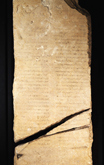
{image_1}The Israel museum will be displaying one of the most important artifacts to have been discovered since the Dead Sea Scrolls. The “Gabriel Revelation Stone,” discovered on the eastern shore of the Dead Sea, sheds light on the spiritual life of the Second Temple period. The Stone complements the Herodian period, tracing the development of the story of the angel Gabriel during the early years of rabbinic Judaism, Christianity, and Islam. Written with ink on stone, in Hebrew, in the first person, the writer identifies himself as the angel Gabriel.
Continue Reading »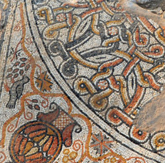
{image_1}A spectacular 1500-year-old mosaic was discovered in a field in southern Israel. The mosaic which dates to the Byzantine period (4th–6th centuries AD) was exposed by the Israel Antiquities Authority (IAA) prior to major road construction.
Continue Reading »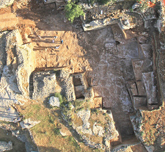
{image_1}An enormous quarry from the time of the Second Temple (first century AD) was exposed in recent weeks in excavations the Israel Antiquities Authority [IAA] is carrying out. A 2,000 year old key, pick axes, severance wedges, etc. were also among the artifacts uncovered during the course of the excavation.
Continue Reading »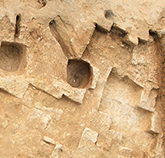
{image_1}In an archaeological excavation in Jerusalem, a rare ritual bath (mikveh) was exposed that dates to the late Second Temple period [530 BC–AD 70]. According to Benyamin Storchan, director of the excavation, “Numerous ritual baths have been excavated in Jerusalem in recent years, but the water supply system that we exposed in this excavation is unique and unusual. The ritual bath consists of an underground chamber entered by way of steps. The mikveh received the rainwater from three collecting basins (otzar) that were hewn on the roof of the bath, and the pure water was conveyed inside the chamber through channels.
Continue Reading »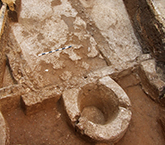
{image_1}Archaeological excavations of the Israel Antiquities Authority provide a glimpse at hundreds of years of magnificent history that lie beneath the busy streets. Recently impressive remains of an industrial installation from the Byzantine period, which was used to extract liquid, were exposed on Hai Gaon Street [in Jaffa].
Continue Reading »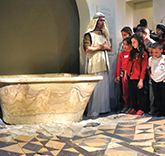
{image_1}Due to the unprecedented public interest, the exhibition of “Herod the Great: The King's Final Journey” will remain open until 4th January 2014, a three month extension of the original schedule.
Continue Reading »{image_1}Remains of a Byzantine settlement with an impressive winepress were recently excavated on behalf of the Israel Antiquities Authority [IAA] near Hamei Yo’av. According to Dr. Rina Avner, the excavation director, “The winepress exceeded 100 sq m [1076 sq ft] in area. It consists of a large treading floor, surrounded by six compartments on the north and east. These compartments were used for fermenting grapes upon their arrival from the vineyards to produce high-quality wine. The treading floor slopes to the west, where a settling vat and two collecting pits are situated in a row. A lead pipe connects the treading floor to the settling vat, which in turn is connected by two lead pipes to the two collecting pits.
Continue Reading »All logos and trademarks in this site are property of their respective owner. All other materials are property of Bridges for Peace. Copyright © 2025.
Website Site Design by J-Town Internet Services Ltd. - Based in Jerusalem and Serving the World.